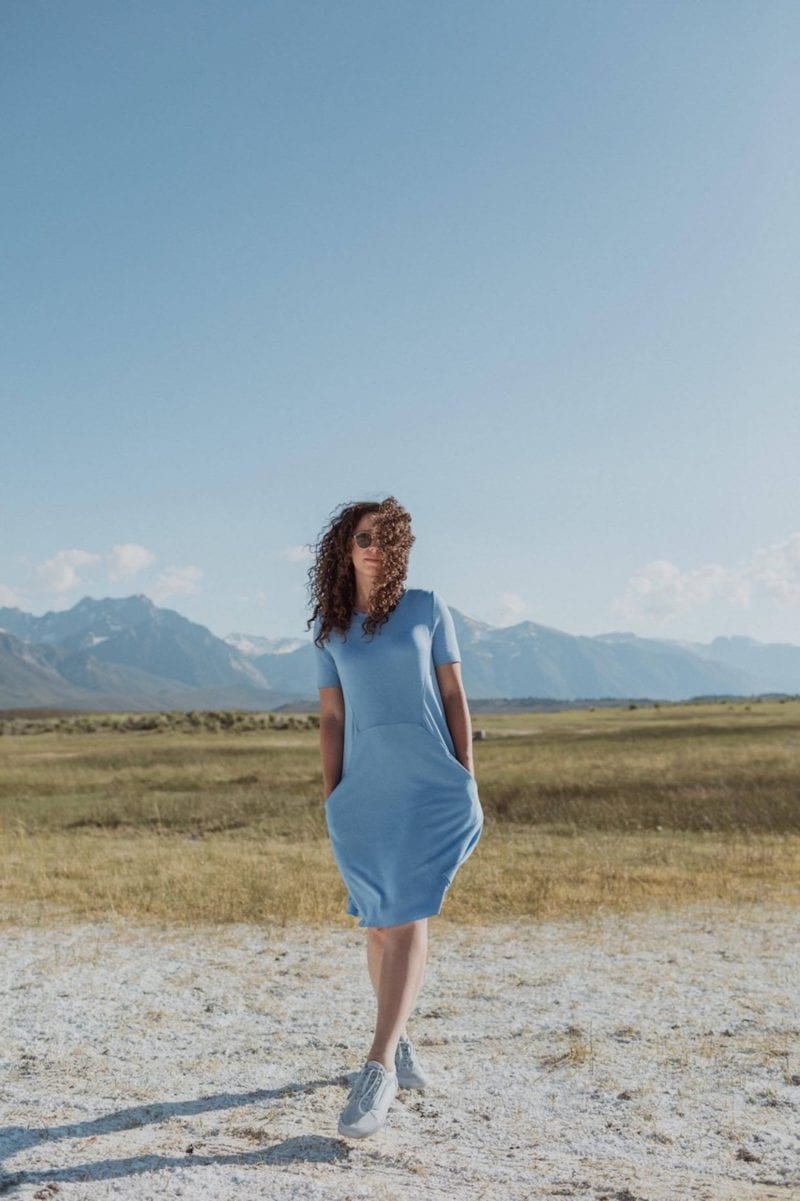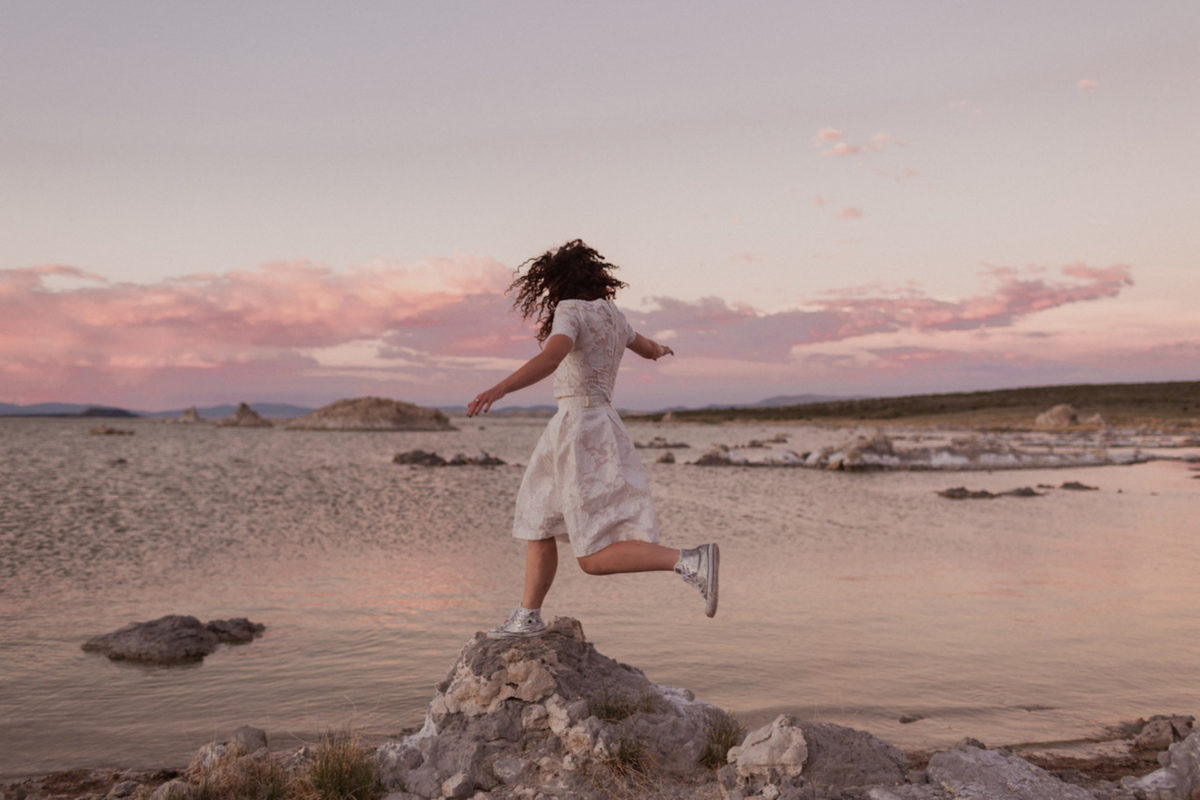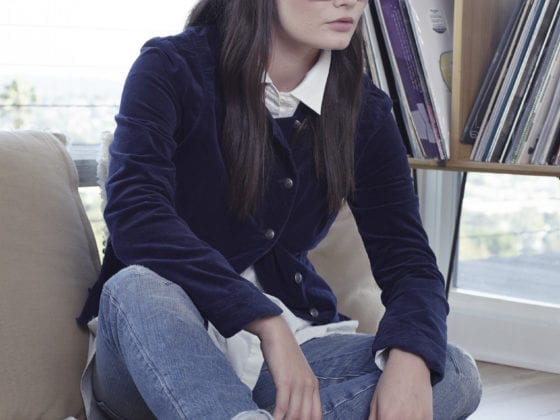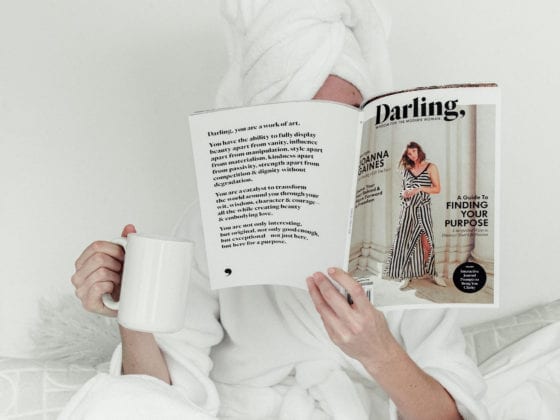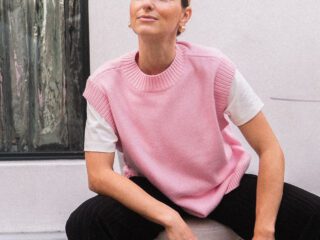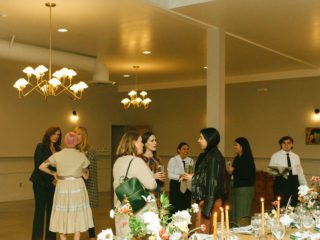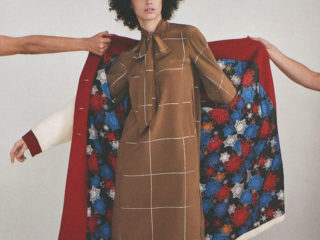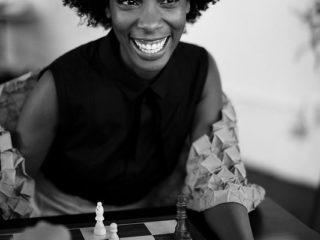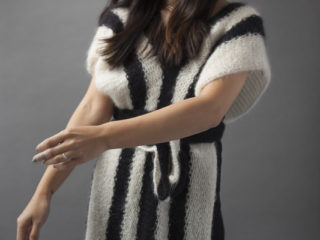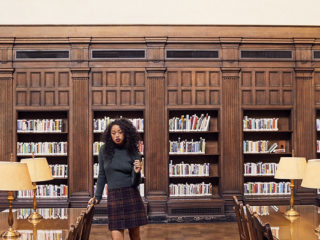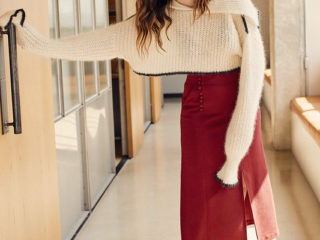“Real Women, Real Work” is a Darling series about everyday women who work in various fields including business, entertainment, science and education. We want to get to know the WHY behind their WHAT and get an inside look into different industries.
Since the Sierra Nevada became my home, I’ve encountered a myriad of women that are not afraid to take a walk on the wild side. You can find them hiking the legendary John Muir and Pacific Crest trails, diving off rocks into glacial lakes, skateboarding down winding roads with Yosemite’s Half Dome as a backdrop, sliding down rails in the terrain park, off-roading in their lifted SUVs or cruising on dirt bikes. Then, there are those that drop 22 feet into an icy and intimidating half-pipe.
Meet Sierra Bowman. As a former professional half-pipe skier, she’s one of the wild ones that flies off of heights that some might consider to be a hazard. At the age of 1, Sierra clicked into her first pair of skis. By the time she was 5, she was already on the race team for Mammoth Mountain. At 10 years old, she took the chair lift up to the top of the terrain park and followed her brother down a massive, U-shaped ditch of snow five times her size.
What if I were to tell you Sierra is afraid of heights? Sierra’s strength is not that she’s fearless. It’s that she’s brave. Sierra went on to transition out of professional skiing to pursue higher education, which she considers to be equally as much of a risk, if not more, as doing a 720-degree spin over solid ice. Skiing, which had once been Sierra’s world, propelled her to discover there was more to her identity than she realized, and she’s embraced her new journey wholeheartedly.
Sierra’s strength is not that she’s fearless, but it’s that she’s brave.
Darling got to sit down with Sierra to learn about her professional skiing career and life after leaving the extreme sports world.
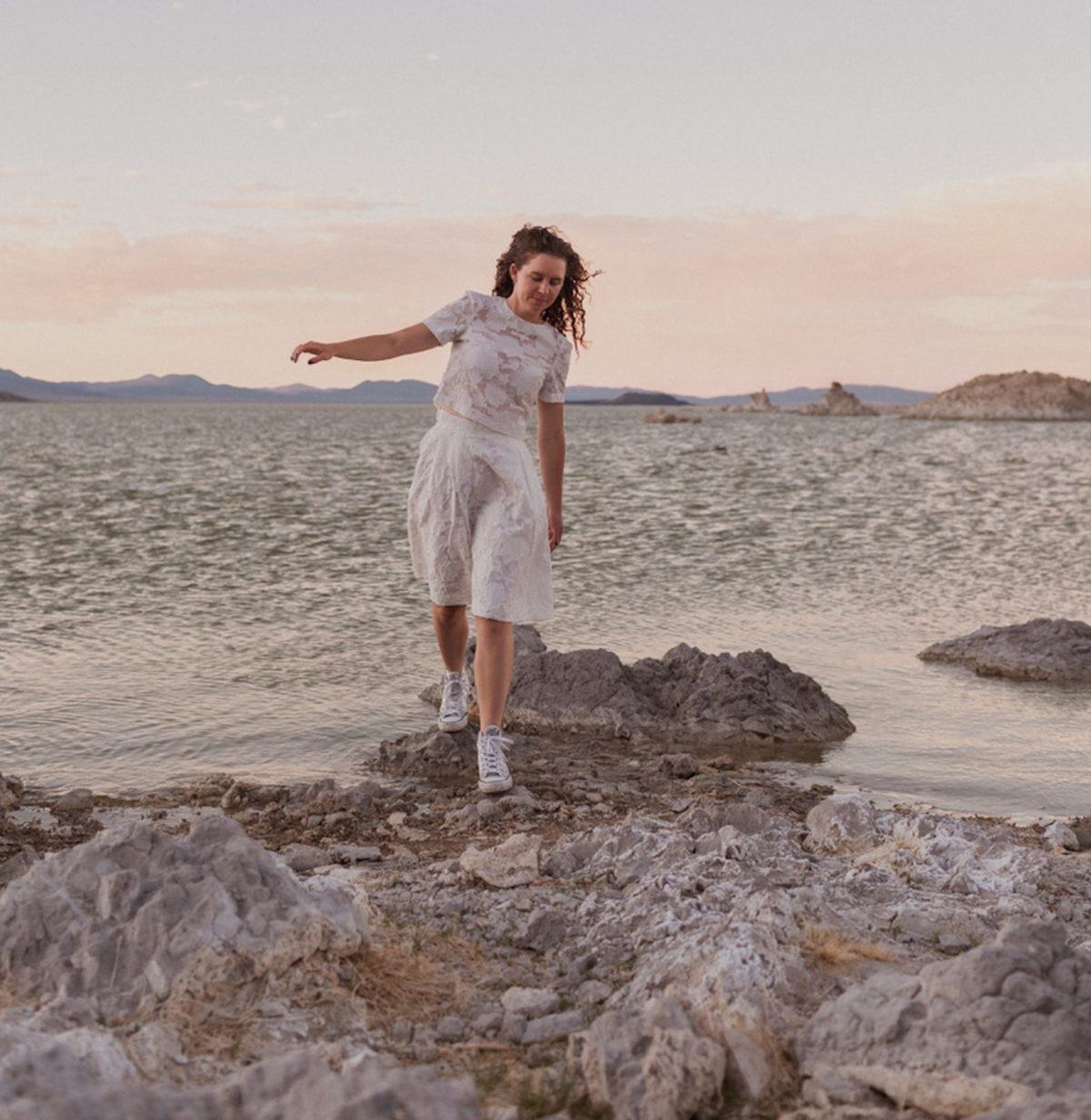
Is it true you’re afraid of heights?
I’m super scared of heights, and it’s really funny. I didn’t realize it until I started rock climbing. I looked down and started hyperventilating. I was like, “This is ridiculous. I used to ski in a 22 foot half-pipe with zero thought about heights. Now, put me anywhere else and I’m terrified.”
How exactly did you get into skiing the half-pipe?
My brother, who’s a couple years younger than me, snowboarded in the half-pipe. I saw him competing one day and thought, “That looks like a lot more fun than racing.”
So, I switched over and kept going back to the half-pipe. I got on the free-ski team and was in contests. Then, suddenly I was in big contests. I sort of fell into it—no pun intended—but I definitely fell in love with it as well.
Did you or your family expect that you would switch over to the pipe?
I think the transition made sense because it was fun for me and my parents saw that. The fact that I stuck with it for so long and ended up becoming a professional—I don’t think any of us expected that.
What did you want to be when you were a little girl?
I have always wanted to be a singer. That’s the first thing that comes to my mind. I also wanted to be a skier and a figure skater.
Were you more of a pink dress, tutu-wearing girl or did you love rolling around in the dirt?
I think I was both. I don’t recall wearing a lot of dresses, but I have loved clothes from an early age. It was very much a combination of “I can roll around in the dirt and go backpacking” or “I want to put on a cute outfit and enjoy that, as well.” It was always a combination.
How would you define femininity?
I feel like it’s who you are as a person. Everything that encompasses who a woman is—that’s what makes her feminine. I feel my best when I’m wearing my favorite coat from Paris and a super nice pair of white sneakers. Some people feel best in a ball gown and others feel best in Crocs. All of those things are feminine because true femininity is when someone feels their best and most confident.
True femininity is when someone feels their best and most confident.
What was it like being a part of a predominantly male-dominated sport?
I grew up skiing mostly with boys and had predominantly male coaches as well. I think it was cool because I always had a crew of girls to ski with, but there was also this desire to be good enough to ski with the boys and to gain their approval.
It pushed me to work even harder. Some of the pressure I put on myself wasn’t necessary, but overall it made me stronger. Being in a “male-dominated” sport made me better because that pressure pulled it out of me.
My brother is currently a professional half-pipe snowboarder, and there was this constant rivalry. We were not on the same level at all, by any degree, but I would push him and he would push me. That was the way it was with all of the guys. They didn’t allow my fears to become an excuse for not trying.
That was the way it was with all of the guys. They didn’t allow my fears to become an excuse for not trying.
They weren’t like, “It’s OK if you can’t do it,” which would have probably been more motherly. Instead, they were like, “Sierra, you can hit that jump or you can do that trick.” In the moment, it felt like a lot of pressure, but it made me so much stronger as a skier and in life in general.
How did you deal as a female skier?
When I was in the sport, I tried not to focus on the differences and inequalities because it wasn’t worth my career. It’s hard to point out the things that are wrong with your sport, especially if you’re not on top, because it would be difficult to get the same opportunities if you were to speak up.
You see this trend in the movie industry. You see it in the music industry. Unless you’re at the top, people don’t speak up because there’s this realization that, “Oh, shoot! This could cost me my career.”
I’m not sure that it’s right to not say anything, but when you’re in it, it’s hard to feel like you can use your voice. I tried to focus on the positives of being pushed by my guy friends and coaches versus some of the things that were wrong like the way they put more guys in finals than they do girls. On a daily basis, the inequalities weren’t on the forefront of my mind because as a professional athlete there were so many other things to focus on—like not dying.

What was your training routine like?
It was pretty crazy. For the most part, you wanted to be on snow. So I would train at home, here in Mammoth, for a chunk of time, and then, I would travel for contests. I would spend a small part of my summer doing dry land training, which is basically intense workouts.
Then, I would end up going overseas to either New Zealand, Australia or Switzerland to do glacier training and Southern Hemisphere training. So it was very much constant travel and getting used to being in different time zones. The goal was to be on the snow all the time.
Did you enjoy the traveling aspect of your career?
That was probably my favorite part of my career. I started traveling out of the country when I was 18, and it was such a whirlwind. To be that young and travel to Australia by myself was exciting. I felt independent and empowered as a young woman.
Why did you decide to retire?
I was competing in the 2018 Olympic qualifiers. Leading up to that, I had been training hard for contests and was riding really well, probably the best I ever had. When fall came around, I traveled to New Zealand and Switzerland to train and started hitting a lot of mental blocks that I just couldn’t get over. I had experienced mental blocks before and had been seeing a sports psychologist for at least a year, but at this point, I couldn’t get past them.
The season started, and I was competing horribly. I pulled out of one contest because I fell on a trick that I almost never fall on. After multiple concussions throughout my career, I didn’t want to put myself at risk anymore. There was no telling what the repercussions of the next concussion would be. There wasn’t an answer as to if I would be fine or if I wouldn’t be. I decided that it was time to move on and pursue new dreams because skiing wouldn’t last forever anyways.
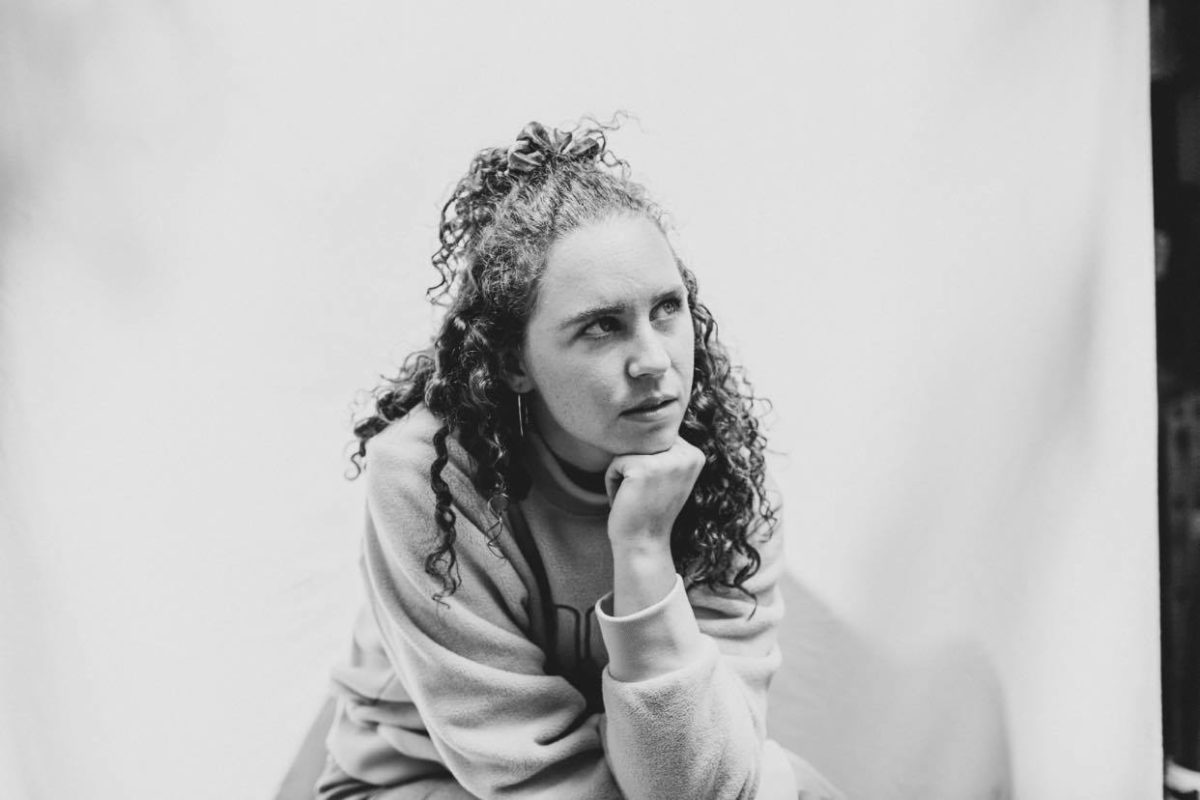
What was that transition like for you?
It was really hard. I thought it would be easier. When I first decided to stop competing I was like, “Wow, this is amazing. I don’t have the weight of the anxiety of training and doing tricks and traveling everywhere.” Then suddenly, after that settled down, I was like, “What do I do now?”
Skiing was my whole world. It was my whole identity. It was where all my friends were, and then, there was this question, “What is life without it?” I had no answers. Only recently, in the past six months, have I felt OK with being out of the sport. It took me more than two years to transition.
What choices did you make to help you along in your transition?
During my career, I was working on my associate’s degree, but exactly a year after I retired, I transferred to Penn State to pursue a degree in design. It gave me something to focus on and a sense of purpose.
I also surrounded myself with really good friends who encouraged me. Some knew me before I stopped skiing and some met me post skiing. Prior, I had always seen myself as a skier. It was really interesting to discover that some people didn’t even know that I was a professional athlete. I came to find out that there was more to me than I realized.
I came to find out that there was more to me than I realized.
What does your life look like at the present moment?
As of today, I started my last semester of college, which is pretty cool. I’ve also been working on music, which is a hobby of mine, but I’ve always wanted it to be more than that. I put out a couple songs on Spotify and Apple Music in hopes that my music career will take off.
In the meantime, my goal is to get a job in design and hopefully, move to New York. I’m trying to look forward and take everything that I’ve learned from skiing and use it today. Things like discipline, working hard and even how to respond to failure.
People don’t want to fail. Why would you want to fail? When I was training, I fell every day. Technically, I guess, I “failed” every day. When you’re working hard, you do fall and you do fail, but you get back up and you try again—whether that’s as a professional athlete, a student, a designer or a singer.
When you’re working hard, you do fall and you do fail, but you get back up and you try again.
When I think of adventure, I think of risk. Besides your career, what are other areas of your life where you’ve had to take risks?
Most recently, school. I’m graduating with a bachelor’s in design at the end of the year and that’s pretty risky for me because I’m a perfectionist. I like to be good at things right away. It’s been really cool to not be good at something and have to work at it.
It’s about putting aside perfectionism and saying, “No, I have to work hard and figure this out.” Skiing in a half-pipe is a literal risk, and school is a mental leap for your mind.
What advice would you give to young women interested in a similar career?
I would say, “Work really hard—harder than you even think you’re capable of working because the fruit of your work is essentially how you make it.”
Knowing what you know now, what advice would you give your younger self?
I would tell my younger self, “Don’t be so concerned about what other people think of you. You can’t possibly be perfect in every aspect of your life. Do your best in all the things you set out to do, but don’t get tripped up when it doesn’t go as planned.”
To learn more about Sierra, follow her on Instagram and also on Spotify and Apple Music.
Image via Kayla Plouffe Photography

